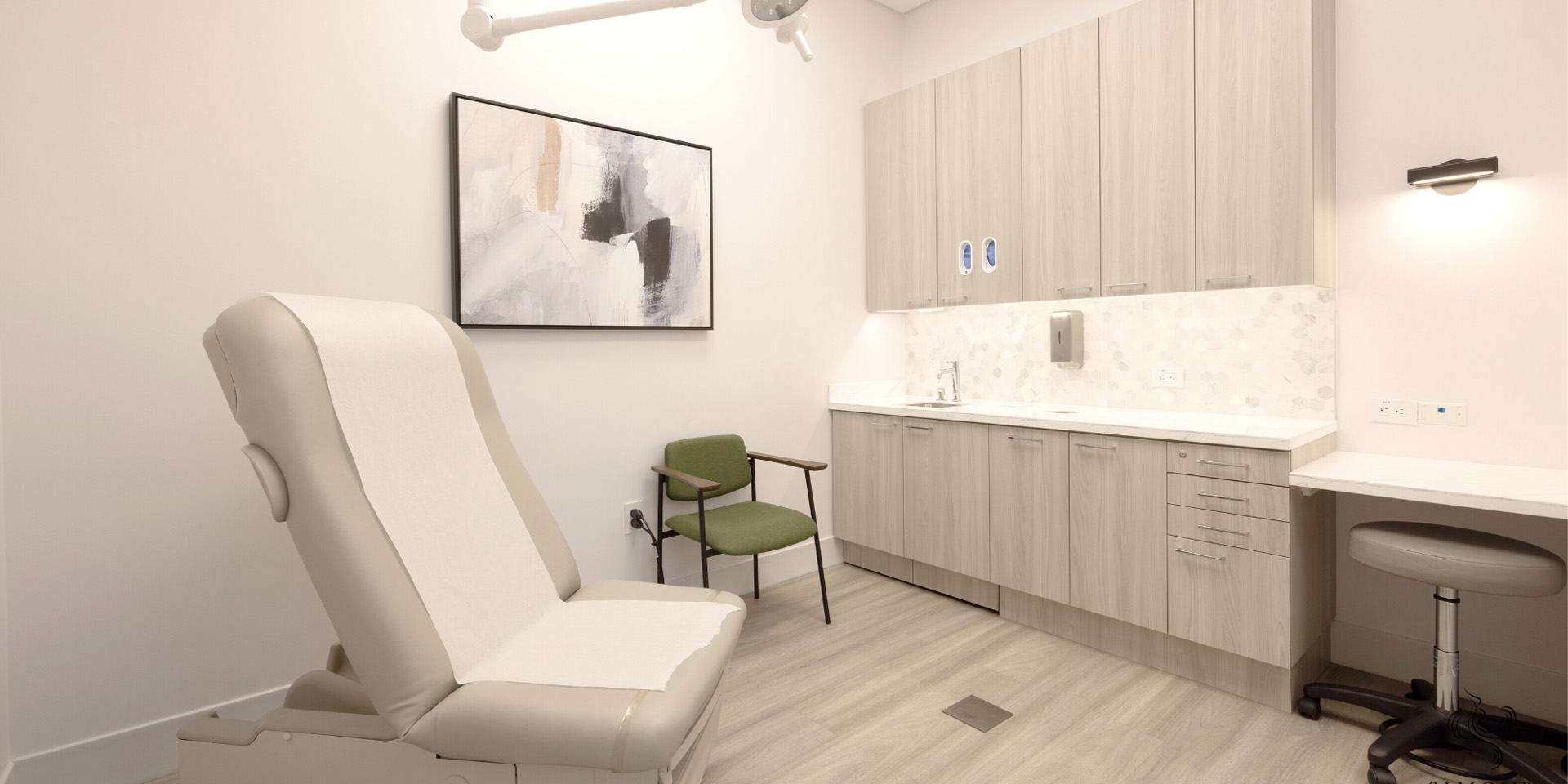“Color is a power that directly influences the soul.” – Wassily Kandinsky
Color psychology is a field of study that examines how colors can affect human emotions, behaviors, and well-being. When it comes to medical spaces, such as hospitals, clinics, and doctor’s offices, color choices play an important role in creating a soothing and supportive environment for patients. Understanding that colors can induce the reception of a space among its users enables Medical Interior Designers to use them with the purpose of creating an intentionally healing environment. Here are some ways in which color psychology influences patient well-being in medical settings.
-
Calm and Soothing (Blues and Greens)
Soft, cool colors such as blues and greens have a calming effect on patients. These colors are often associated with nature – the openness of the skies and the vibrancy of trees and can help create a sense of tranquility, healing, and relaxation. They are particularly beneficial in areas where patients may be waiting for extended periods or undergoing medical procedures. Commonly used in waiting areas and patient recovery rooms, they help to reduce anxiety and stress in patients.
-
Positive and Uplifting (Yellows and Oranges)
Bright and warm colors such as yellows and oranges can create a positive and energetic environment. These colors are often used in areas where patients undergo treatments or therapy to promote a sense of optimism and vitality. They can help patients feel more at ease and welcomed. Warm colors like these are often used in pediatric areas or spaces where a friendly and cheerful atmosphere is desired.
-
Improved Focus and Concentration (White and Light Gray)
In areas where concentration and focus are crucial, such as examination rooms or surgical suites, neutral colors like white or light gray are often employed. These colors provide a sense of cleanliness and sterility while allowing medical professionals to concentrate on their work without distractions.
-
Perception of Cleanliness (Whites and Pastels)
Colors like white and light pastels are commonly associated with cleanliness and sterility. Using these colors in healthcare settings, especially in areas such as operating rooms and examination rooms, can help patients perceive the space as clean and hygienic, contributing to their overall sense of well-being.
-
Stimulation and Positive Distraction (Reds, Yellows, and Greens)
Incorporating vibrant and cheerful colors can provide a positive distraction for patients, particularly children or those undergoing long-term treatments. Bold colors like red, yellow, and green can create an energetic atmosphere, potentially reducing stress and boredom. These colors can be used strategically in areas where patients may need a boost in mood, such as pediatric wards or recovery rooms, to provide a pleasant distraction and promote a more optimistic outlook.
-
Comfort and Warmth (Earth Tones: Neutrals, Beiges, Browns)
Warm and earthy tones like neutrals, beiges, and browns can help create a sense of comfort and stability. These colors can be incorporated into lounge areas or patient rooms to evoke a feeling of security and warmth. Natural materials that bear these colors can best be employed for a timeless-looking interior design.
It’s important to note that individual responses to color can vary, and cultural factors can influence color associations. Therefore, healthcare facilities should consider a diverse range of patients and seek professional advice when selecting color schemes for their medical spaces. Additionally, lighting, texture, and other design elements should be considered in conjunction with color to create a holistic healing environment. It’s important to note that color psychology is just one aspect of creating a patient-centered medical environment. Factors like lighting, acoustics, and overall design should also be taken into consideration to ensure a holistic approach to enhancing patient well-being.
Understanding that colors matter and that they have value enables us to use them effectively to deliver the experience we set out to give our patients. Picking colors out is not just a random exercise to us but a tool to build high-performing medical spaces. Book a complimentary design consultation with us now and find out more about how our interior design process can drive your practice forward and deliver a worthwhile patient experience you can be proud of. Have a good one!




